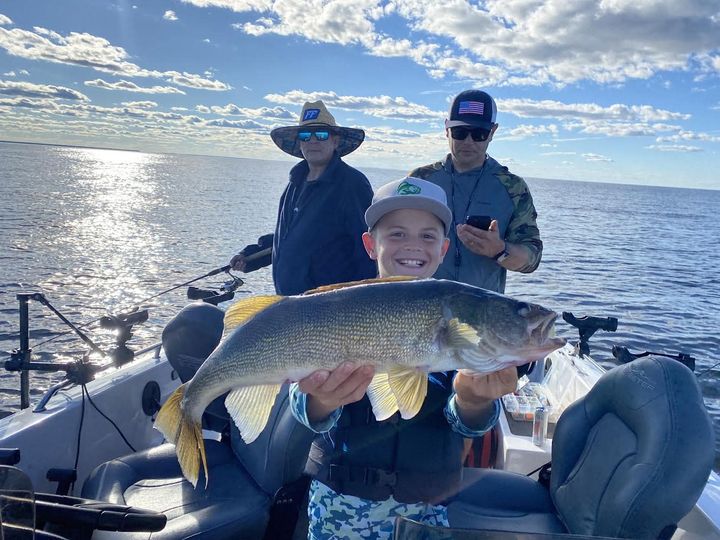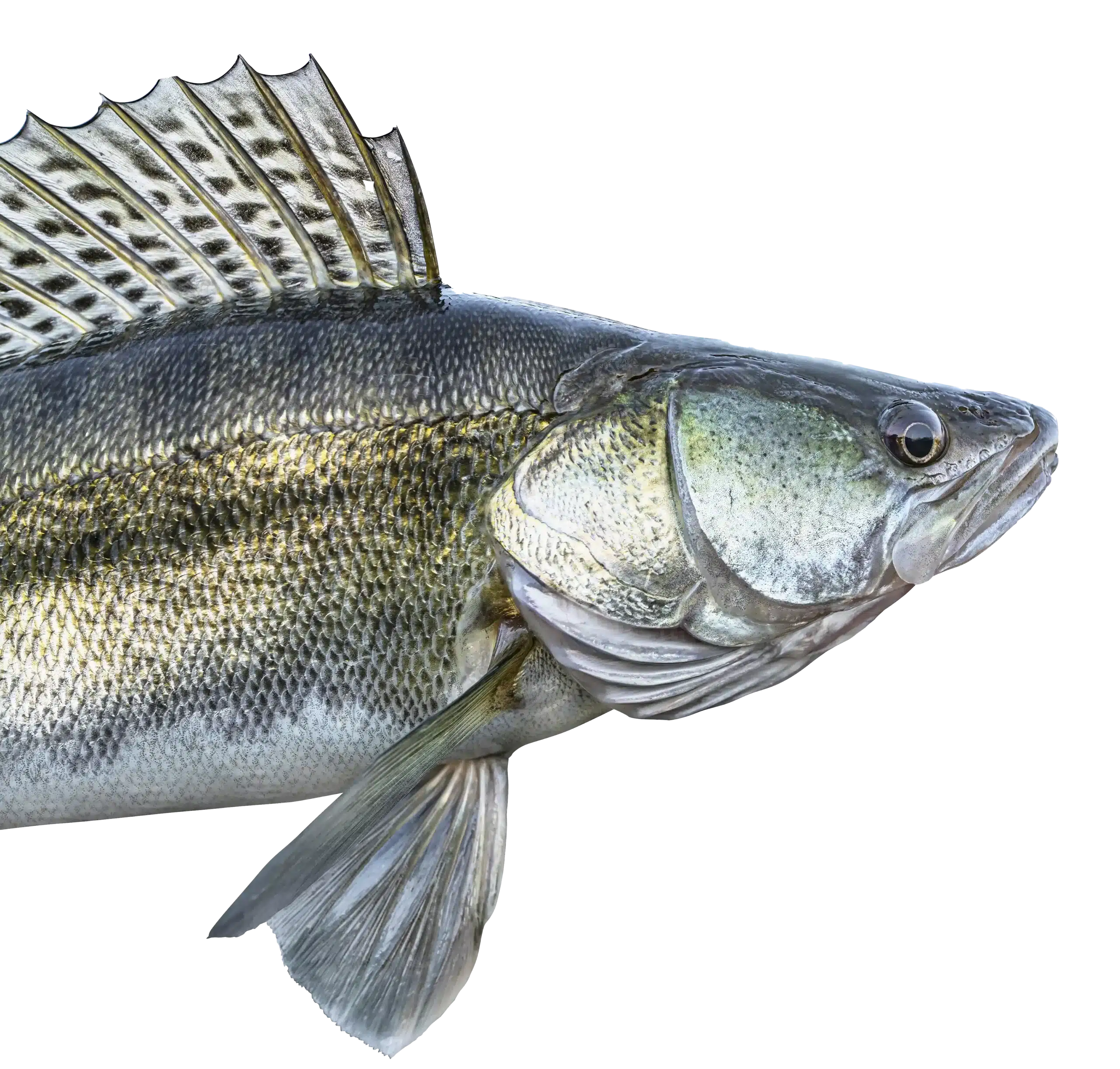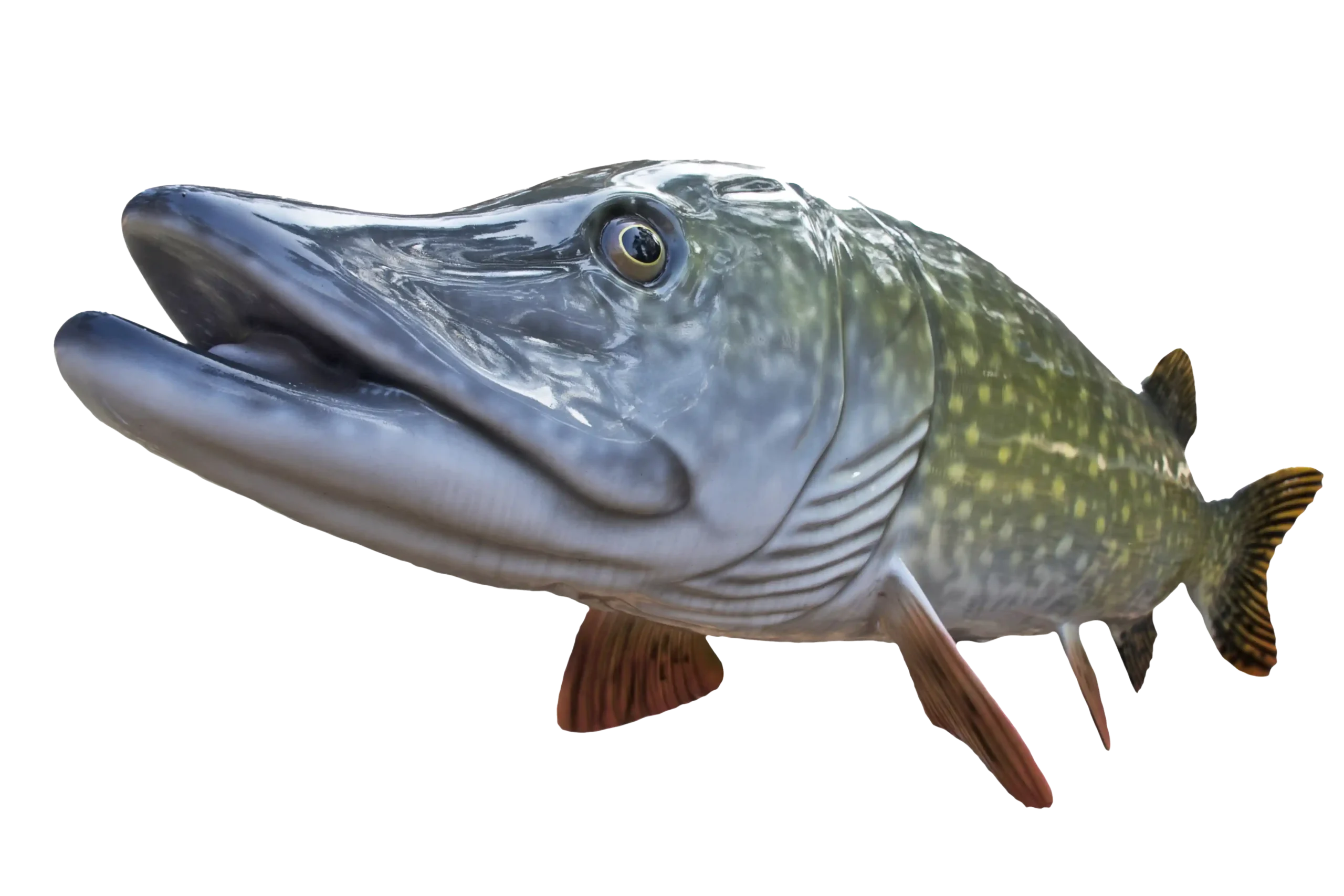Will Sturgeon End Up Being Managed Federally Like the Wolves?
By Joe Henry
This is not another story about wolves. Rather, this is a story about Lake Sturgeon. The connection? There is an effort to add sturgeon to the endangered species list, just like the gray wolf has been. If this would happen, the many very sharp fisheries managers and biologists within the MN DNR who have worked tirelessly for years bringing back the lake sturgeon population would lose all control as far as managing the sturgeon in Minnesota. Other states would lose control managing sturgeon in their state as well. And we, as anglers, could very easily lose the opportunity to fish for one of the largest and strongest fish that swims in fresh water, the prehistoric sturgeon.
In a nutshell, the U.S. Fish and Wildlife Service has until June 30 to decide if lake sturgeon should be listed under the Endangered Species Act. The Center for Biological Diversity sued the agency to require sturgeon to be federally protected, and a judge imposed a deadline for a decision.
Others involved in supporting this effort to add Lake Sturgeon to the endangered species act are Fishable Indiana Streams for the Hoosiers, Hoosier Environmental Council and Prairie Rivers Network.
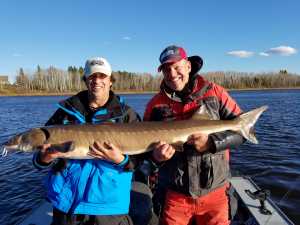
This isn’t an opinion piece about wolves, and what should be done with management of them. This is an opinion about saving sturgeon fishing in Minnesota in bodies of water where the sturgeon are healthy and thriving. It is also about common sense, and who it makes sense to manage the sturgeon population. From this outdoorsman’s perspective, it is common sense that the state, or in this case, the MN DNR, should maintain management of the sturgeon fishery in Minnesota.
Imagine, individual lakes and rivers in Minnesota are managed independently, based on their fish populations, forage, invasives and many other biological factors. The MN DNR works hard at keeping up research and making the best decisions they know how for each lake or river. Does it make sense to turn this type of management over to a federal agency? I say not. It doesn’t make sense to throw all sturgeon fisheries together and make wide sweeping decisions when there are such disparities between each body of water. If there was legitimate biological information to show sturgeon populations were struggling, then that should be considered. If populations are healthy, leave well enough alone. The effort happening currently, doesn’t see it this way and has the potential to mess things up for generations.
What’s at stake?
The Local Economy
First off, the economy of various areas of Minnesota where sturgeon thrive, particularly the watershed of the Rainy River and Lake of the Woods, the St. Croix River and other emerging sturgeon fisheries across the state, would suffer.
Sturgeon fishing brings in welcomed capital to resorts, fishing guides, bait stores, gas stations, grocery stores, bars, restaurants, hardware stores and the list goes on. When someone travels to fish sturgeon and stays overnight in Minnesota, for every dollar spent on lodging, there is typically a 5-7 time multiplier as far as the overall impact to the economy. This would be lost.
In the case of the Rainy River, much of the sturgeon season happens during the “shoulder season” or a time between the largest tourism seasons of winter and summer. This is welcomed revenue to everyone.
Many anglers also enjoy summer fishing the Rainy River for sturgeon. As a rule, most anglers fish the lake for walleyes during the summer and the river is much quieter. If you are a resort on the river, a tackle company who produces sturgeon tackle, or any other business situated along the river away from the lake, you sure notice and appreciate the sturgeon anglers who have the river oftentimes to themselves.
The resort business is not an easy one. In recent years, resort owners in the Lake of the Woods area alone have been faced with a pandemic, record breaking flooding and an unseasonably warm winter making the season shorter. Eliminating sturgeon fishing would cut into some businesses deep, for some, fatally deep.
Tradition
For many, it has become exactly that, a long lasting tradition to come up and soak nightcrawlers with friends and loved ones on the slow rolling Rainy River. If you have never done it, it is hard to explain how enjoyable and relaxing sturgeon fishing is.
The way you sturgeon fish is find a spot in the river you think sturgeon will be hanging out, often times a hole in the river. You anchor up and pitch out a sturgeon rig and wait. It’s that waiting, and the conversations, and nature and relaxing that all comes together as the secret sauce. If you haven’t tried it, it is some of the best “cheap psychology” on the planet.
Sitting back, chewing the fat with those you care about in a relaxed setting, there is nothing better. The various birds are constantly flying up and down the river, there is wildlife and and absolute Rainy River beauty.
The point is, groups love sturgeon fishing. They come back, in many cases, multiple times per year.
Legitimate Opportunity to Catch a Fish of a Lifetime
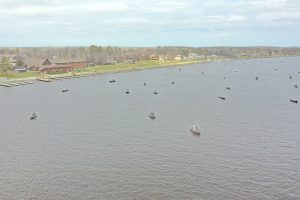
There aren’t many places in the Midwest you have a very legitimate chance to catch 40 – 100 lb fish. Fishing sturgeon on the Rainy River, you do. It happens every single day during the sturgeon season.
During the spring walleye season (which lasts through April 14th), it is not uncommon to see walleye anglers hooked up with a big sturgeon who couldn’t resist their frozen emerald shiner on a jig. The boat that’s hooked up normally pulls anchor and follows the fish around for about 45 minutes before they have a chance to land the fish they call a dinosaur, due to it’s prehistoric roots.
The sturgeon anglers purposefully use heavier tackle and typically will land a sturgeon much quicker. A sturgeon rig is about an 18 inch leader material at about 60lb test with about a 4/0 circle hook combined with a good sized flat “no roll” sinker designed for the current of a river. You load your hook with a big glob of nightcrawlers and/or frozen emerald shiners, pitch your bait out, tighten your line and wait for some light taps. The sturgeon have a keen sense of smell and will follow the scent trail to your bait.
It is recommended when sturgeon fishing to have the proper equipment ready. A big landing net, pliers, phone, tape measure, everything to make some memories and get that fish back healthy. There is a period throughout the year anglers can actually harvest a sturgeon on the Rainy River. They must purchase a sturgeon tag first. Then, during the keep season, they can keep one 45 – 50 inch or one 75 inch or greater sturgeon per calendar year. The sturgeon is actually tagged and reported to the MN DNR as they keep close track of how many are harvested each and every year.
Sturgeon are very plentiful in this body of water. The MN DNR has stated they estimate the Rainy River has more than 100,000 sturgeon over 40 inches in the southwest portion of Lake of the Woods, an area about Morson, ON on Lake of the Woods, down through the NW Angle, the big water of Big Traverse bay and the Rainy River.
This winter, in many areas across the south shore, pike spearers have reported seeing many multiple sturgeon swimming through. Anglers using forward facing sonar can see sturgeon come through clear as a bell. The sturgeon population on the Rainy River and Lake of the Woods is thriving.
Lake of the Woods Tourism has contacted our federal legislators about this topic. We have also communicated with a variety of other stakeholders.
I don’t know what goes on behind the scenes at the U.S. Fish and Wildlife Service, but I sure hope they make their decision logically based on data. What’s scary is, a politician once told me not to use logic and politics in the same sentence. Let’s hope this one, with the help of many, goes the right direction.
Lodging in the Lake of the Woods Area

